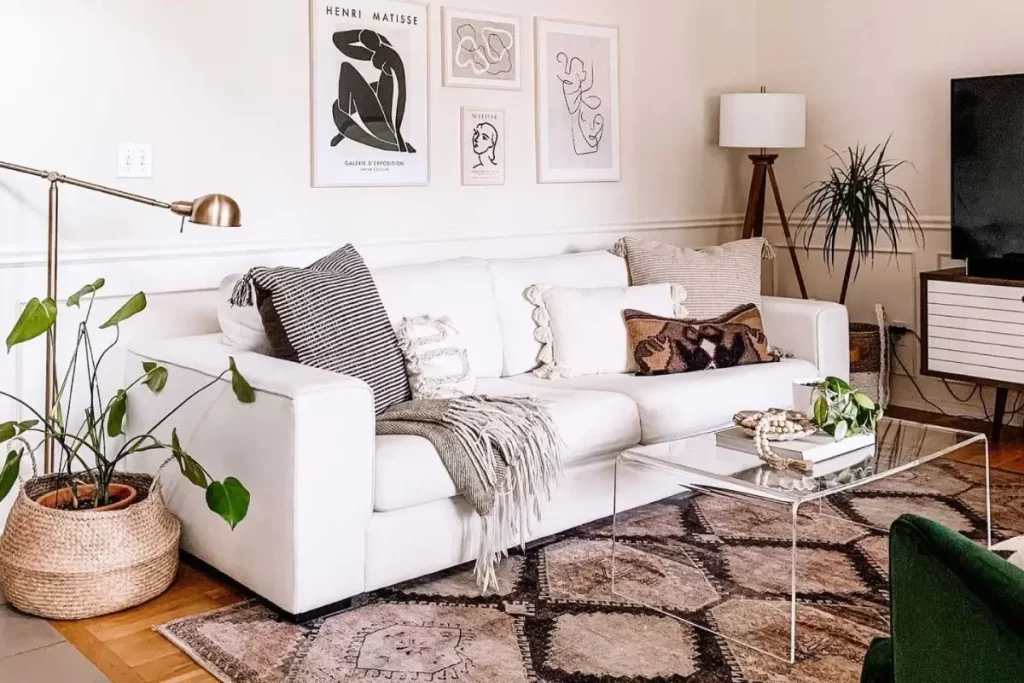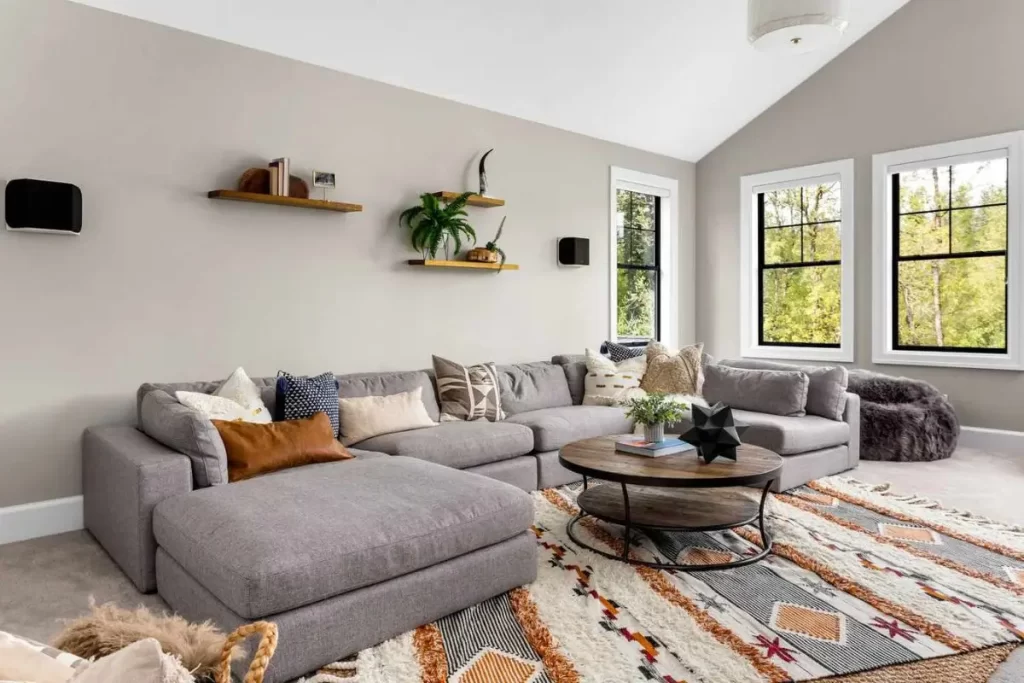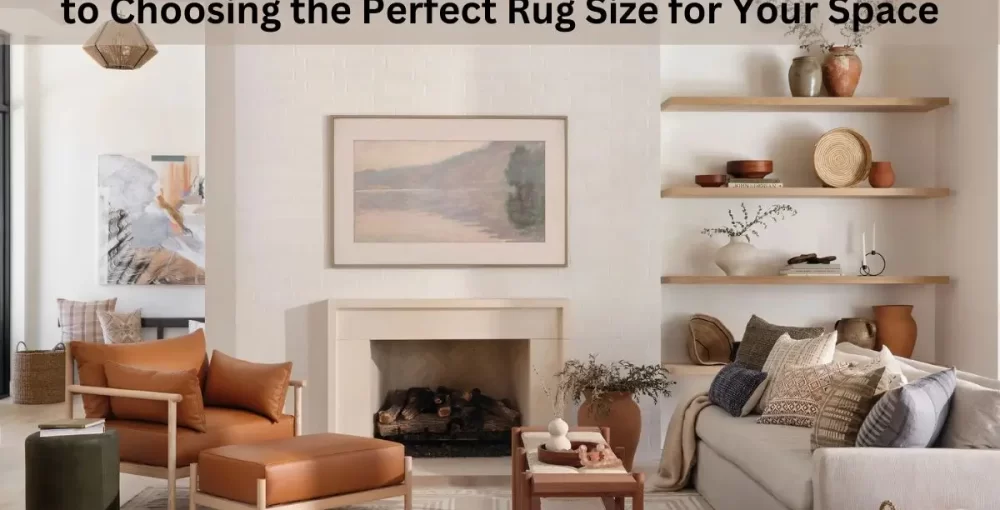Rugs are the unsung heroes of interior design. They add warmth, style, and definition to a space, transforming a room from ordinary to inviting. But when it comes to rug size, many people find themselves puzzled: should a rug be bigger than your furniture? While there’s no one-size-fits-all answer, this decision can significantly impact the functionality and aesthetics of your space. This guide breaks down the nuances of rug sizing, helping you find the perfect fit for every room. From living rooms to offices, we’ll explore practical tips and common mistakes, so your rug enhances—not detracts from—your home’s design.
General Guidelines for Rug Sizing
When considering whether a rug should be bigger than your furniture, think about balance and cohesion. A larger rug often anchors a room, creating a defined zone for furniture. For example, in a living room, having all the furniture legs on the rug can unify the seating area, making it feel grounded. On the other hand, smaller rugs can create visual clutter, especially in larger rooms.
The general rule of thumb is that at least the front legs of your furniture should rest on the rug. This ensures that the rug connects the furniture visually while still leaving some floor space visible. For open-plan spaces, larger rugs help define boundaries between functional areas. Ultimately, the size of the rug should depend on the dimensions of your room and the layout of your furniture.

Room-Specific Rug Size Tips
Living Room
In the living room, the rug size determines the seating arrangement’s cohesiveness. Ideally, the rug should be large enough to fit all furniture legs, but this isn’t always feasible. For smaller spaces, having just the front legs on the rug can achieve a balanced look. A large rug can make a compact living room appear more spacious by eliminating visual breaks between furniture.
Ensure that there’s enough space between the edges of the rug and the walls—around 12–18 inches—to frame the room. Conversely, in open-plan areas, the rug can act as a visual boundary, separating the living room from adjacent spaces like the dining area. Whether you prefer a minimalist or layered look, the rug should complement the scale and style of your living room furniture.
Dining Room
A dining room rug should be spacious enough to accommodate the table and chairs, even when the chairs are pulled out. As a rule, the rug should extend at least 24 inches beyond the edges of the table. This ensures the chairs remain on the rug, maintaining stability and visual harmony.
Round rugs work well with round dining tables, while rectangular rugs are best suited for longer tables. Avoid rugs with thick piles, as they can make chair movement cumbersome. The rug should also be durable and easy to clean since spills are common in dining areas. Choosing the right size and shape will enhance the room’s elegance without compromising functionality.
Bedroom
In bedrooms, rugs bring coziness and warmth, especially when placed underfoot. The ideal rug should extend at least 18–24 inches beyond the sides and foot of the bed, covering the area where your feet touch the ground. For larger bedrooms, a full-size rug that fits under both the bed and bedside tables creates a luxurious look.
If you’re working with a smaller rug, place it horizontally under the lower two-thirds of the bed, leaving space around the headboard. Alternatively, two runners on either side of the bed can achieve a similar effect in smaller spaces. The goal is to add comfort without overwhelming the room’s layout.
Factors to Consider When Choosing a Rug Size
The perfect rug size depends on a combination of factors:
- Room Dimensions: Measure your space carefully, leaving a border of exposed flooring around the edges.
- Furniture Layout: Decide if the rug will sit under all furniture, only the front legs, or serve as a standalone accent.
- Functionality: In high-traffic areas, consider rugs that are large enough to minimize tripping hazards.
- Visual Balance: Choose a size that enhances the room’s proportions. A too-small rug can make the space feel disconnected, while an oversized rug might dominate the design.
Taking these elements into account ensures a cohesive and functional design.

Rug Shapes and How They Affect Size Decisions
The shape of your rug also plays a role in how it fits your space.
- Rectangular Rugs: Best for linear or symmetrical rooms, like living rooms or bedrooms.
- Round Rugs: Perfect for small or asymmetrical spaces, such as entryways or breakfast nooks.
- Layering Rugs: Adding a smaller rug over a larger one can create depth and texture, especially in neutral or monochrome rooms.
Choose a shape that complements your furniture and layout. For instance, a round rug under a circular coffee table enhances symmetry, while a rectangular rug aligns well with long couches.
Common Mistakes to Avoid
- Choosing a Rug That’s Too Small: This can make the furniture appear disjointed and the space look unfinished.
- Ignoring Proportions: A rug that’s too large might overpower smaller furniture or make the room feel cramped.
- Skipping Measurements: Always measure your space and furniture layout to avoid size mishaps.
- Neglecting Door Clearance: Ensure the rug doesn’t obstruct door movement, especially in smaller spaces.
Avoiding these mistakes will help you choose a rug that harmonizes with your room’s design.
Practical Tips for Buying the Right Rug
- Use painter’s tape to outline the rug size on your floor before purchasing.
- Consider the pile height: Low-pile rugs work best in high-traffic areas, while plush rugs add comfort to bedrooms and living rooms.
- Prioritize materials: Durable options like wool or synthetic blends are ideal for family spaces.
- Think ahead: Opt for versatile sizes that work with potential future layouts.
Conclusion
Choosing the right rug size is about finding balance and harmony between your furniture, space, and personal style. Rugs that are bigger than your furniture often create a cohesive, grounded look, but the decision ultimately depends on your room’s dimensions and function. By considering factors like room layout, furniture placement, and practical needs, you can select a rug that elevates your home’s design. Remember, a well-chosen rug doesn’t just complete a room—it transforms it into a welcoming, stylish space you’ll love.

